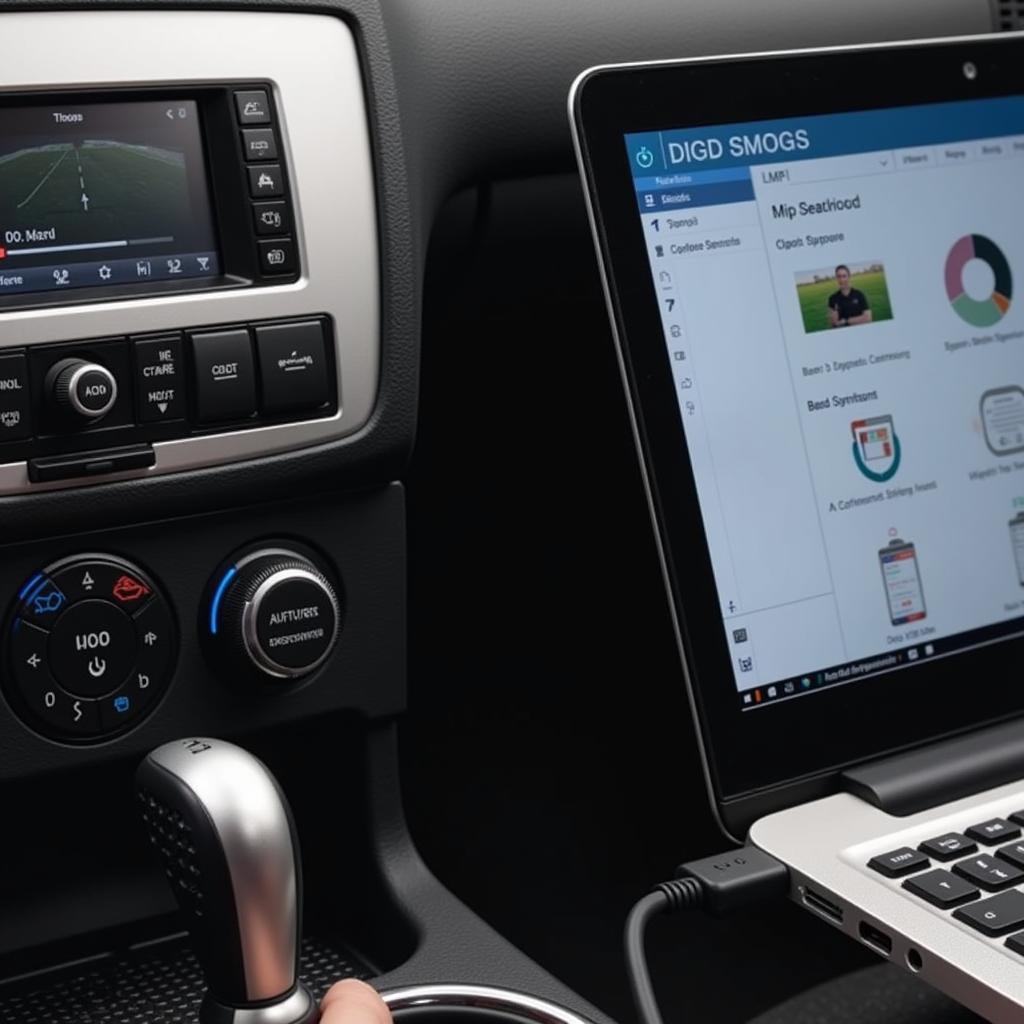A car diagnostic cable for laptop all in one is an essential tool for any DIY mechanic or professional technician. It allows you to connect your laptop directly to your vehicle’s onboard diagnostic system (OBD-II port) to read and clear diagnostic trouble codes (DTCs), monitor live data streams, and perform various diagnostic tests. Choosing the right cable can be tricky, so let’s dive in and explore everything you need to know.
Understanding the Need for a Car Diagnostic Cable
Why would you need a car diagnostic cable for your laptop? Simply put, it empowers you to understand what’s happening under the hood of your car. From a check engine light to more complex issues, this cable acts as a bridge between your car’s computer and your laptop, providing valuable insights that can save you time and money.
Benefits of Using a Car Diagnostic Cable
- Cost Savings: Diagnose problems yourself and potentially avoid expensive mechanic visits.
- Early Detection: Identify potential issues before they become major problems.
- Enhanced Understanding: Gain a deeper understanding of your car’s systems.
- DIY Repairs: Perform basic repairs and maintenance tasks yourself.
- Improved Resale Value: Maintain a detailed service history and improve your car’s resale value.
Choosing the Right Car Diagnostic Cable for Your Laptop
Not all car diagnostic cables are created equal. Factors like compatibility with your vehicle’s make and model, software compatibility, and the cable’s features are crucial.
Compatibility is Key
Ensure the cable is compatible with your vehicle’s OBD-II protocol. Most modern cars (post-1996) use the standard OBD-II protocol, but some older vehicles may require specific adapters. Also, check if the cable is compatible with your laptop’s operating system (Windows, macOS, Linux).
Software Considerations
The diagnostic software you choose will determine the functionality and features available. Some cables come bundled with software, while others require you to purchase software separately. Research different software options to find one that suits your needs and budget.
Types of Car Diagnostic Cables
Several types of car diagnostic cables exist, each with its pros and cons.
USB Cables
These are the most common and generally the most affordable. They offer a reliable connection and are compatible with most laptops.
Bluetooth and Wi-Fi Adapters
These wireless options offer greater flexibility and convenience, allowing you to move around freely while diagnosing your car. However, they can be more susceptible to interference and connection issues.
Professional-Grade Cables
These cables offer advanced features and functionalities, such as faster data transfer rates and compatibility with a wider range of vehicles and software. They are ideal for professional mechanics and serious DIY enthusiasts.
Using a Car Diagnostic Cable: A Step-by-Step Guide
- Locate the OBD-II Port: Usually found under the dashboard on the driver’s side.
- Connect the Cable: Plug the cable into the OBD-II port and connect the other end to your laptop.
- Install the Software: Install and launch the diagnostic software on your laptop.
- Read and Clear Codes: Use the software to read any stored DTCs and clear them after addressing the underlying issues.
- Monitor Live Data: Observe real-time data from various sensors to diagnose problems.
- Perform Diagnostic Tests: Run specific tests depending on the software’s capabilities.
Expert Insights
“A quality car diagnostic cable for laptop all in one is a must-have for any car owner. It’s like having a personal mechanic at your fingertips,” says Robert Johnson, Senior Automotive Technician at Johnson’s Auto Repair. “It empowers you to understand your car better and take control of its maintenance.”
Conclusion
Investing in a car diagnostic cable for laptop all in one can save you money, time, and headaches in the long run. By understanding the different types of cables and software available, you can choose the right tools to diagnose and maintain your vehicle effectively. Remember to prioritize compatibility with your vehicle and software requirements.
FAQ
- What is an OBD-II port? It’s a standardized port that allows access to a vehicle’s diagnostic system.
- Do I need special software? Yes, you’ll need compatible diagnostic software to interpret the data from the cable.
- Can I use this cable with any car? Most modern cars (post-1996) are compatible, but check your vehicle’s specifications.
- Is it difficult to use? Most software interfaces are user-friendly and easy to navigate.
- Can I clear codes myself? Yes, but addressing the underlying issue is crucial.
- What if I can’t find the OBD-II port? Consult your vehicle’s owner’s manual.
- Where can I buy a car diagnostic cable? Online retailers and auto parts stores offer a variety of options.
Need help? Contact us via WhatsApp: +1(641)206-8880 or Email: [email protected]. Our customer support team is available 24/7.



